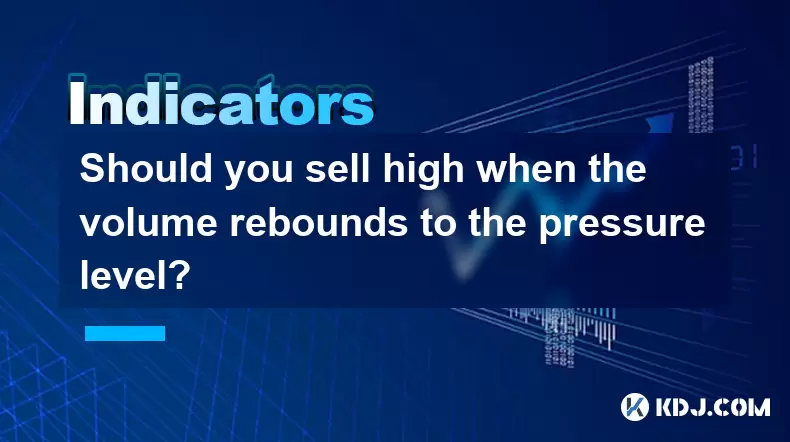-
 Bitcoin
Bitcoin $118100
0.44% -
 Ethereum
Ethereum $3765
5.84% -
 XRP
XRP $3.498
3.12% -
 Tether USDt
Tether USDt $1.000
0.00% -
 BNB
BNB $753.2
3.41% -
 Solana
Solana $181.7
3.58% -
 USDC
USDC $0.9999
0.01% -
 Dogecoin
Dogecoin $0.2704
12.75% -
 Cardano
Cardano $0.8684
5.85% -
 TRON
TRON $0.3151
-0.86% -
 Hyperliquid
Hyperliquid $46.06
4.51% -
 Stellar
Stellar $0.4695
2.48% -
 Sui
Sui $3.910
3.18% -
 Chainlink
Chainlink $19.36
6.65% -
 Hedera
Hedera $0.2750
3.99% -
 Bitcoin Cash
Bitcoin Cash $544.6
6.31% -
 Avalanche
Avalanche $25.12
3.69% -
 Shiba Inu
Shiba Inu $0.00001559
5.40% -
 Litecoin
Litecoin $116.8
5.10% -
 UNUS SED LEO
UNUS SED LEO $8.991
0.05% -
 Toncoin
Toncoin $3.283
2.79% -
 Polkadot
Polkadot $4.509
3.97% -
 Uniswap
Uniswap $10.67
6.58% -
 Ethena USDe
Ethena USDe $1.001
-0.01% -
 Monero
Monero $323.2
0.48% -
 Pepe
Pepe $0.00001410
6.37% -
 Bitget Token
Bitget Token $4.964
1.93% -
 Dai
Dai $0.9998
-0.01% -
 Aave
Aave $326.2
3.85% -
 Bittensor
Bittensor $421.8
2.46%
Should you sell high when the volume rebounds to the pressure level?
A surge in trading volume at key resistance levels often signals strong selling pressure, especially in volatile crypto markets like Bitcoin or Ethereum.
Jun 29, 2025 at 02:50 pm

Understanding the Relationship Between Volume and Price
In cryptocurrency trading, volume is a critical metric that reflects the intensity of buying or selling activity. When volume rebounds significantly as price approaches a known pressure level, it often signals strong resistance where sellers dominate buyers. This phenomenon can be particularly telling in markets like Bitcoin, Ethereum, or altcoins with high volatility.
A pressure level refers to a price zone where supply exceeds demand, causing the price to reverse. When volume surges at this point, it typically indicates increased selling pressure. Traders often interpret this as a potential signal to take profits or initiate short positions. However, understanding the context behind this rebounding volume is essential before making any decisions.
How to Identify Reliable Pressure Levels
Before deciding whether to sell high based on volume behavior, traders must first confirm the reliability of the pressure level. Here's how:
- Historical Rejection: Look for areas on the chart where the price has previously rejected multiple times.
- Horizontal Resistance Zones: These are levels where the price has struggled to break through repeatedly.
- Fibonacci Retracement Levels: These can act as dynamic resistance zones when combined with historical data.
- Moving Averages: The 50-day or 200-day moving average often serves as psychological barriers in trending markets.
- Volume Profile Peaks: Areas where large volume has accumulated historically can also indicate strong resistance.
Once a trader identifies such a level, observing how volume reacts upon retesting becomes crucial.
Analyzing Volume Behavior at Key Resistance
When the price reaches a known resistance area and volume increases significantly, it usually suggests that institutional players or large holders are actively selling. This increase in volume can be seen as a sign of distribution rather than accumulation. In technical terms, if the price fails to break above the resistance despite rising volume, it may indicate that selling pressure outweighs buying interest.
However, there are exceptions. Sometimes, high volume at resistance can precede a breakout if the momentum is strong enough. Therefore, it’s important to look for additional confirmation signals:
- Candlestick Patterns: Bearish reversal patterns like shooting stars or evening stars can reinforce the idea of rejection.
- Order Book Depth: Analyze buy and sell walls on exchanges to see whether large orders are placed near the resistance.
- Market Sentiment: Social media trends, news events, or macroeconomic factors can influence how volume impacts price action.
Strategies for Selling High During Volume Rebounds
If you're considering selling when volume rebounds at a pressure level, here are actionable steps to execute the trade effectively:
- Mark Your Resistance Zone Clearly: Use previous swing highs or consolidation areas as reference points.
- Wait for Volume Spike Confirmation: Don’t rush into a trade before seeing a noticeable increase in volume.
- Use Candlestick Closures Below Resistance: Confirm rejection by waiting for the candle to close below the key level.
- Place Take-Profit Orders Near the Resistance: If already long, set profit targets just below the resistance zone.
- Set Stop-Loss Orders Above Resistance: Protect yourself from unexpected breakouts that might invalidate your setup.
Traders who follow these steps can better manage risk while capitalizing on market psychology and institutional behavior.
Differentiating Between Fakeouts and Genuine Rejections
One of the biggest challenges in using volume rebounds at resistance is distinguishing between a genuine rejection and a fakeout. Fakeouts occur when the price briefly spikes past a resistance level only to reverse sharply afterward. This tactic is often used by whales or manipulators to trigger stop-losses before reversing direction.
To avoid falling into fakeout traps:
- Ignore Wicks That Extend Beyond Resistance: Focus instead on actual closing prices.
- Monitor Volume Across Multiple Timeframes: Higher timeframe confirmation (like daily charts) can help filter noise.
- Combine Volume with Order Flow Analysis: Observe order book dynamics to see whether real liquidity exists at the resistance.
- Use Multi-Timeframe Confirmation: Align your entry or exit with both short-term and long-term charts.
- Watch for News Events Around Resistance Tests: Sudden news can distort normal volume patterns.
By applying these filters, traders can reduce false signals and improve the accuracy of their sell decisions.
Frequently Asked Questions
Q: Can volume alone determine whether I should sell?
No, volume should never be used in isolation. It must be interpreted alongside price action, support/resistance levels, and other technical indicators to form a complete picture.
Q: How do I differentiate between distribution and accumulation at resistance?
Distribution is characterized by rising volume during downward movement after hitting resistance. Accumulation, on the other hand, shows higher volume during price increases or sideways consolidation at resistance.
Q: Should I always sell when volume spikes at resistance?
Not necessarily. If the price breaks out strongly and closes above resistance with sustained volume, it could signal a new bullish trend. Always wait for confirmation before acting.
Q: What tools can help me track volume more effectively?
Trading platforms like TradingView, Binance Futures, or Bybit offer advanced volume indicators such as On-Balance Volume (OBV), Volume Weighted Average Price (VWAP), and Footprint Charts for futures traders.
Disclaimer:info@kdj.com
The information provided is not trading advice. kdj.com does not assume any responsibility for any investments made based on the information provided in this article. Cryptocurrencies are highly volatile and it is highly recommended that you invest with caution after thorough research!
If you believe that the content used on this website infringes your copyright, please contact us immediately (info@kdj.com) and we will delete it promptly.
- Tezos, Conflux, and the Altcoin Rebound: What's Driving the Surge?
- 2025-07-21 14:50:12
- Giants Protocol Token Launch: Revolutionizing Asset Ownership with Blockchain Innovation
- 2025-07-21 15:30:12
- DeFi Evolution: Data Oracles and NFT Integration Leading the Charge
- 2025-07-21 14:30:12
- Super Apps, Stablecoins, and Future Payments: A NYC Perspective
- 2025-07-21 14:30:12
- Cardano (ADA) Price Surges Amid Bitcoin ATH Buzz: What's Next?
- 2025-07-21 12:30:11
- Bitcoin, UK, and Sale: Decoding the Crypto Buzz in Britain
- 2025-07-21 12:30:11
Related knowledge

Advanced RSI strategies for crypto
Jul 13,2025 at 11:01am
Understanding the Basics of RSI in Cryptocurrency TradingThe Relative Strength Index (RSI) is a momentum oscillator used to measure the speed and chan...

Crypto RSI for day trading
Jul 12,2025 at 11:14am
Understanding RSI in the Context of Cryptocurrency TradingThe Relative Strength Index (RSI) is a momentum oscillator used to measure the speed and cha...

Crypto RSI for scalping
Jul 12,2025 at 11:00pm
Understanding RSI in the Context of Crypto TradingThe Relative Strength Index (RSI) is a momentum oscillator widely used by traders to measure the spe...

What does an RSI of 30 mean in crypto
Jul 15,2025 at 07:07pm
Understanding RSI in Cryptocurrency TradingRelative Strength Index (RSI) is a momentum oscillator widely used in cryptocurrency trading to measure the...

What does an RSI of 70 mean in crypto
Jul 13,2025 at 06:07pm
Understanding the RSI Indicator in Cryptocurrency TradingThe Relative Strength Index (RSI) is a widely used technical analysis tool that helps traders...

Does RSI work in a bear market for crypto
Jul 16,2025 at 01:36pm
Understanding RSI in Cryptocurrency TradingThe Relative Strength Index (RSI) is a momentum oscillator used by traders to measure the speed and change ...

Advanced RSI strategies for crypto
Jul 13,2025 at 11:01am
Understanding the Basics of RSI in Cryptocurrency TradingThe Relative Strength Index (RSI) is a momentum oscillator used to measure the speed and chan...

Crypto RSI for day trading
Jul 12,2025 at 11:14am
Understanding RSI in the Context of Cryptocurrency TradingThe Relative Strength Index (RSI) is a momentum oscillator used to measure the speed and cha...

Crypto RSI for scalping
Jul 12,2025 at 11:00pm
Understanding RSI in the Context of Crypto TradingThe Relative Strength Index (RSI) is a momentum oscillator widely used by traders to measure the spe...

What does an RSI of 30 mean in crypto
Jul 15,2025 at 07:07pm
Understanding RSI in Cryptocurrency TradingRelative Strength Index (RSI) is a momentum oscillator widely used in cryptocurrency trading to measure the...

What does an RSI of 70 mean in crypto
Jul 13,2025 at 06:07pm
Understanding the RSI Indicator in Cryptocurrency TradingThe Relative Strength Index (RSI) is a widely used technical analysis tool that helps traders...

Does RSI work in a bear market for crypto
Jul 16,2025 at 01:36pm
Understanding RSI in Cryptocurrency TradingThe Relative Strength Index (RSI) is a momentum oscillator used by traders to measure the speed and change ...
See all articles

























































































